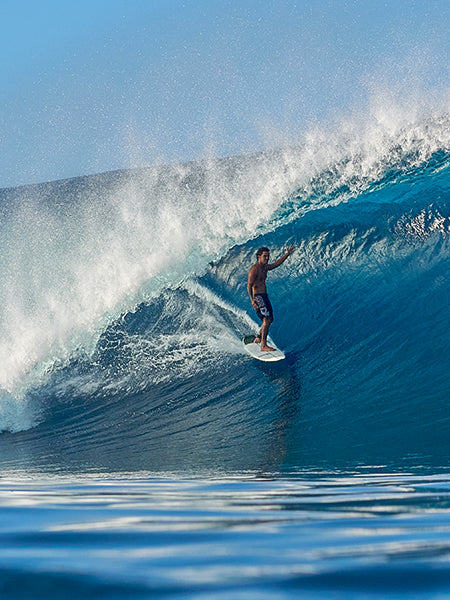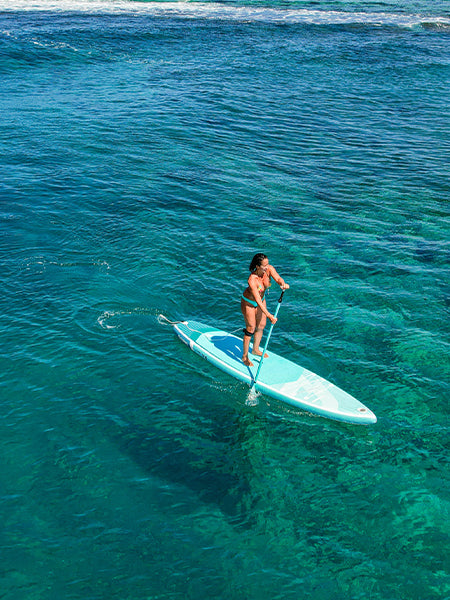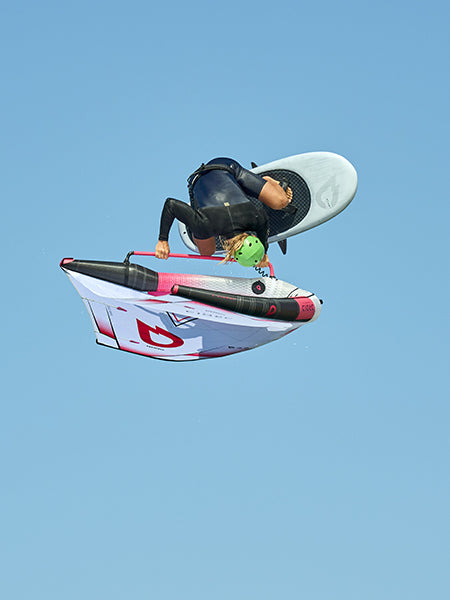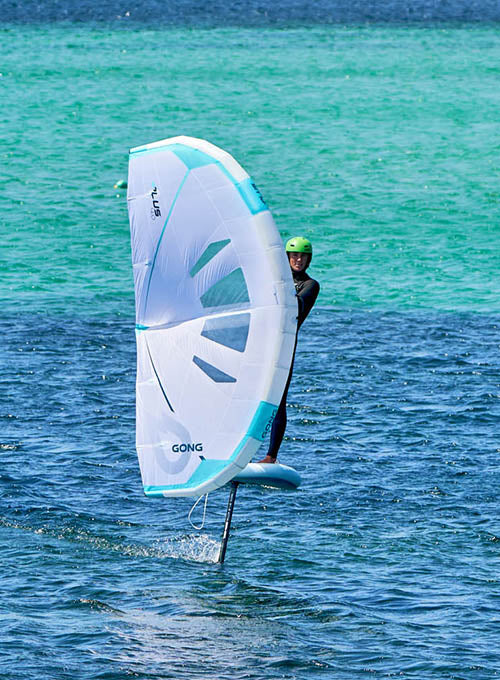360 toeside to jibe

The 360 toeside to jibe is one of the many variations of the 360 toeside. This maneuver consists of making a complete rotation on oneself using the technique of normal 360. Then regain control of the wing just before landing so you can use it to do a 180 once you’ve landed. Of course, you need to have a good grasp of the 360 toeside first before adding an extra U-turn.
With the basic trick in your pocket, you can start to innovate …
First, we are going to review the 360 toeside technique together.
So you are sailing toeside, regardless of the conditions and gear. Your front hand is in the supination position. You choose a ramp you like, you put an impulse into your foil and you engage the rotation once in the air while remaining straight. Once you’ve done the near-full rotation of your lower body, you let go of your back hand and then look at the landing. As soon as you hit the water, you finish your handle-pass and set off again.
- Remember: putting your front hand in the supination position is the key to turning forward.
In itself, this variation is almost similar to the basic trick.
The only point that will really change the initial maneuver is the way you are going to perform your handle-pass. Indeed, you will have to make your handle-pass but while being in the air, that is to say before the reception. To do this, once the 360 is finished, you have to bring the wing over your head, look at your hand first and do it. To do this handle-pass, you are going to have to grab the front handle with your back hand, then with your front hand you grab the back handle. Watching your hands in the air will help you not to get lost and to get hold of the correct handles.
- A little trick, to find the rear handle, you can slide your hand on the central strut and grab it as soon as you feel it. Remember to bring the wing above your head and a little downwind of you. If you leave it too much behind your head, the handle-pass will be harder to do.
Once you’ve made your handle pass, you should be landing. As you touch the water, you’ll need to bring the wing slightly closer to your shoulders and then push hard with your back hand while pulling your front hand up a bit. Doing this will allow you to do the last part of the rotation. Be careful, during this last 180 you will change tack, so your wing must be in the umbrella position but slightly tilted for the wind to catch in and make you turn. If you open it too far, you’ll get it ripped from your arms. On the other hand, if you don’t open it enough, it may go backwind or just lose all the power you need to complete the move.
It is true that for this trick, you will need more height because it will take you longer to do the handle-pass. At first, you will surely fall at the reception because you will be too focused on your change of hands. But don’t worry, once the movement becomes automatic, you won’t worry about your hands anymore. After that, the last 180 is the easiest part because you are not flying so you will have a lot more balance.
You now have in mind all the details of this new trick. All you have to do is go into the water and practice …
Key points:
- Front hand in the supination position
- Straight body in the rotation
- A well executed handle-pass
- A good balance at the reception










